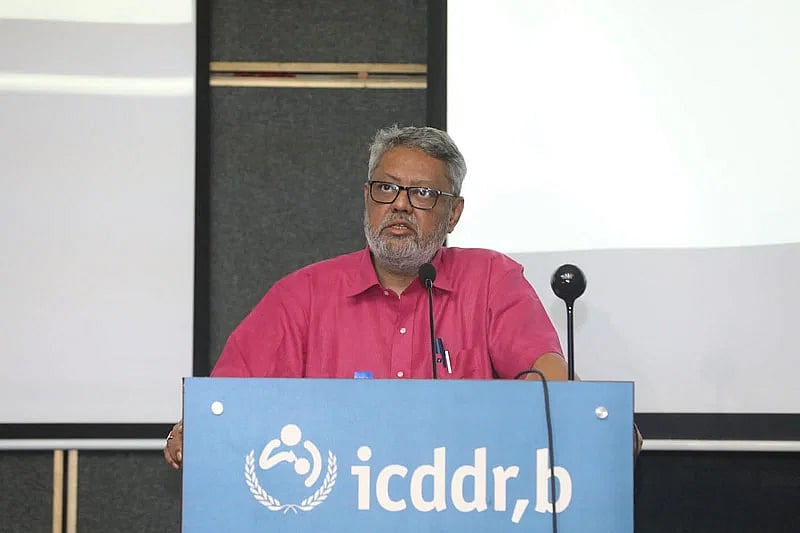Soaring income disparity a matter of concern: Binayak Sen

Income disparity has been rising among the people of Bangladesh and this has turned into a matter of concern, said Bangladesh Institute of Development Studies (BIDS) Director General Binayak Sen on Tuesday.
While addressing a programme, organised celebrating 63rd founding anniversary of International Centre for Diarrhoeal Disease Research, Bangladesh (icddr,b), Binayak Sen said the value of gini coefficient in the country now stands at 0.50. The value in the cities is 0.54 and in villages it is 0.45.
He further stated that a disparity regarding consumption has also increased. In 2022, the value of gini coefficient regarding consumption at the national level was 0.334, with 0.356 in cities and 0.291 in villages.
If the value of gini coefficient stands at 0, this suggests that complete equality exists in the society. If the value is 1, this suggests that the society is completely unequal.
When the value of gini coefficient crosses 0.50, this suggests that there exists high income disparity in the country. That means, Bangladesh has turned into a country with high income disparity.
The BIDS director general further said that existing social safety nets are not truly capable of facing this income disparity. That means this is not affecting the situation that much, remarked Binayak Sen.
Recalling the Household Income and Expenditure Survey (HIES) of 2016, Binayak Sen said that 27.8 per cent families were under the social safety net at that time. As per the report, there is a huge inequality in towns and villages in this regard. Though 34.5 per cent families in villages are covered by the social safety nets, the number in towns drops to a mere 10.1 per cent though the disparity is much more in towns.
The noted researcher further said inequality has been rising, this dictum suggests that rich are becoming more rich while the poor are turning into poorer. But the nature of inequality in Bangladesh is a bit different.
According to him, the condition of both poor and non-poor class has improved but the rate of improvement of non-poor class is more.
Binayak Sen presented his keynote paper on the propensity of poverty in Bangladesh and its factors.
He said the Covid-19 pandemic and Ukraine conflict have affected the country’s poverty situation critically. But the country achieved significant development in alleviating poverty in the preceding decade, he highlighted.
Binayak Sen highlighted the main factors of poverty and proposed some policies to overcome the situation. He proposed to implement smart macroeconomic management, sustainable development and improvement in efficient human resources through adopting short-term and middle-term plans taking into consideration the geo-economic conditions.
The BIDS director general showed in his presentation that despite the rise in government expenditure, the tax-GDP ratio has been declining in Bangladesh. The tax-GDP ratio in the country in 2000-01 was 8.5 which slightly rose to 10.4 in 2010-11. In that year the amount of government expenditure in relation to the GDP was 14.2 per cent.
The tax-GDP ratio in Bangladesh declined to 9.96 per cent in the 2020-21 financial year but the amount of government expenditure in relation to the GDP soared to 15.27.
This is why the capacity of expenditure of the government has been decreasing, he remarked.
Canada High Commissioner to Bangladesh, Lilly Nicholls attended the seminar as the chief guest.